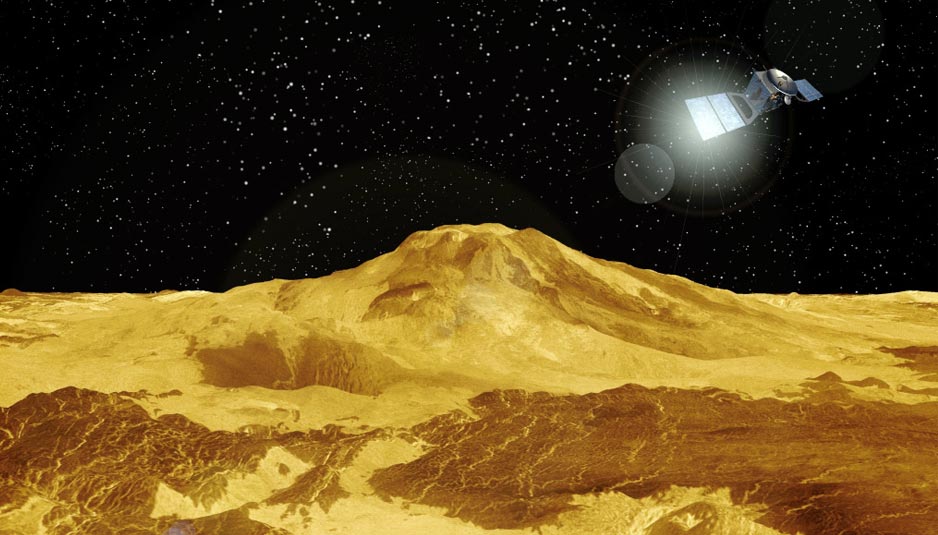Aerobraking maneuver for Venus Express: space weather bullettins

Venus Express, Close-up Engineering
The last and most dangerous phase of the mission of the ESA probe Venus Express started on 18th June, 2014: this is the maneuver of “aerobraking”.
Venus Express is the first mission of scientific exploration of the planet Venus by the European Space Agency (ESA), it has been designed with the aim to study the Venusian atmosphere and clouds, to analyze the surface and produce a map of the surface temperature of the planet.
Venus Express was launched on 9th November, 2005 thanks to a Soyuz Fregat launcher from the Baikonur Cosmodrome in Kazakhstan, and it arrived at Venus on 11th April, 2006.
During this maneuver, taking advantage of the resistance of the Venusian atmosphere, the European probe has to slow down its speed, descending from an altitude of about 200 kilometers to 130 kilometers.
It has been programmed as the final act of a mission lasting eight years, when the spacecraft is about to finish its fuel supplies, as at this altitude it is subjected to a high thermal stress and atmospheric turbulence that could divert the trajectory from its elliptical orbit.
“We know that the current state of our Sun can affect the atmosphere of Venus, which in turn can affect the envisaged orbit of Venus Express that passes through the atmosphere” said Adam Williams, Deputy Director of Operations of Venus Express.
Despite the risks, the probe can test its components in a hostile environment as the Venusian atmosphere and bring back valuable data on its properties. In order to make the operation safer and more controlled, ESA has set up a space weather service for Venus, which provides the largest and most up to date information on weather conditions that could affect the normal functioning of the mission.
This service for regular space weather bulletins was developed last years, addressed to corporations, institutions, companies and industries that are interested in relation to their effects on our planet.
From May, however, the control center of Venus Express receives daily reports on solar activity from Space Weather Coordination Centre in Uccle, Belgium, established by the “Space Situational Awareness” (SSA) of the ESA. The data comes from an extension in the direction of Venus of the space weather forecast elaborated for Earth, since there is no spacecraft between the Sun and Venus currently, designed to provide direct data.
Juha-Pekka Luntama, office manager of the SSA space weather, has explained: “The aim is to learn about the current conditions and make a short-term prediction of solar activity and radiation conditions specifically for Venus. We used to do that for the satellites that orbit the Earth, but in the case of Venus is quite a challenge, both for its location and because of the complexity of the environment of the planet”.
This need has led the ESA to extend, by the end of the year, its network of space weather, to include the Heliospheric Expert Weather Service Centre, which will be dedicated to the various ongoing missions to other parts of the solar system.
